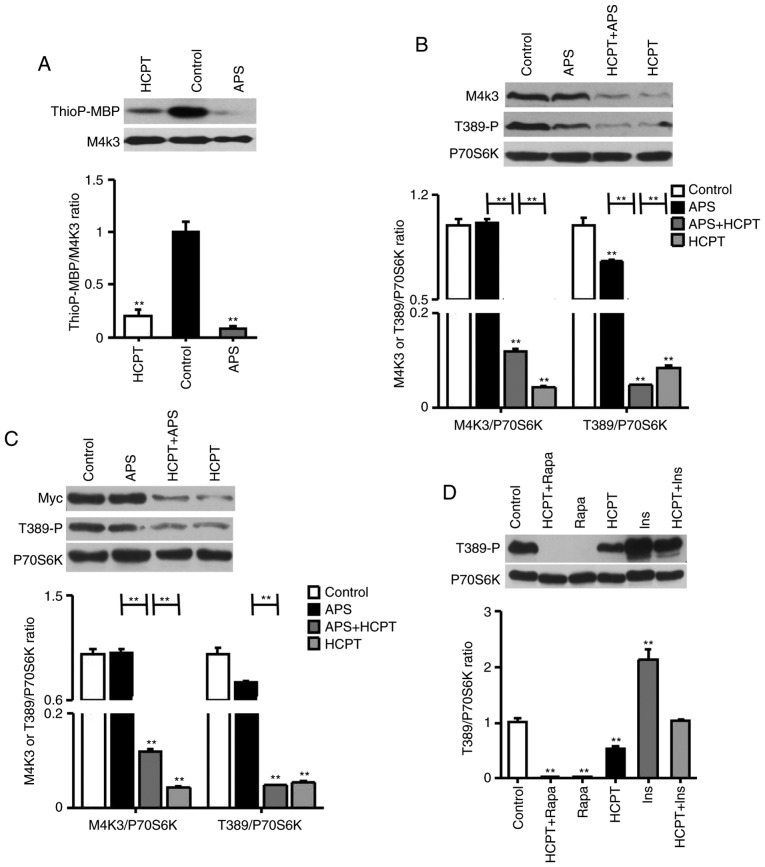Figure 1.
APS, HCPT and the combination of APS and HCPT inhibit the MAP4K3/mTOR signaling pathway in H1299 cells. (A) In vitro kinase assays using WT-MAP4K3 immunoprecipitated from 293T cells with myelin basic protein as a substrate, ATPγS as a phospho-donor and 1 mg/ml APS or 1 µM HCPT incubated at 30°C for 30 min. (B) Endogenous expression of MAP4K3 and Thr389-phosphorylation of S6K in H1299 cells, detected by western blot analysis following incubation with 1 mg/ml APS or 1 µM HCPT, or the combined agents, for 24 h. (C) H1299 cells were transfected with 0.5 µg pRK5mycMAP4K3, serum-starved for 16 h and treated for 24 h with 1 mg/ml APS or 1 µM HCPT, or the combined agents. (D) Thr389-phosphorylation of S6K in H1299 cells was assessed via western blot analysis. Serum-starved cells were incubated with 1 µM Ins for 30 min or 1 µM HCPT for 24 h, or Ins followed by HCPT; or, cells were treated with 50 nM Rapa for 1 h or 1 µM HCPT for 24 h, or with Rapa followed by HCPT. Western blot results are representative of three independent experiments. APS, Astragalus polysaccharide; HCPT, 10-hydroxycamptothecin; M4K3, mitogen-activated protein kinase kinase kinase kinase 3; mTOR, mammalian target of rapamycin; WT, wild-type; Rapa, rapamycin; Ins, insulin. **P<0.01, vs. untreated control.

